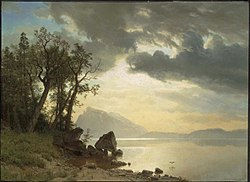Laundry Was Quite the Chore
- Cheryl Anne Stapp

- Oct 28, 2020
- 2 min read

When the only machines were a woman’s hands and arms, and washtubs were filled with hand-drawn buckets of well or creek water instead of flowing through a network of pipes, wash day anywhere on the American frontier was an all-consuming task.
Preparation alone was a long and arduous process. Before soap factories were established in California, homemakers either had to pay for costly imported soap, or make their own from lye and tallow—a long and tedious undertaking. First, the pioneer housewife needed to make lye. She did this by carefully collecting only the white, paper-like flakes from a cooled hardwood fire into a bucket with a perforated bottom. Next, she poured boiling water over it, letting the water leach through the ash bucket into another container. This process was repeated several times over several days, strengthening the lye each time the liquid in the in the catch pot was re-boiled and leached again through the ash bucket. The lye water was strong enough to make soap if a chicken feather dissolved when it was dipped into the pot.
Meanwhile, the housewife had already cleaned chunks of beef or mutton fat and cooked them for several hours until they softened. When this was ready she strained the liquid fat and mixed it in with the lye water. The new concoction simmered for several hours, and then was taken off the fire. When cool, it was ready to pour into molds for individual bars; or if the frontier housewife had no molds, she turned the solid chunks out onto boards and cut it into individual cakes of laundry soap.
On weekly wash days, whites such as bedding, shirts, and petticoats were boiled clean in soap-filled kettles over a fire. Colored garments were scrubbed on a corrugated washboard in separate tubs. Rinsing required yet more buckets of fresh water, and after the laundry was sun dried the slow business of ironing began, with four or more cast iron flatirons.
Why so many? Typically weighing four pounds and with either a metal or wooden handle, these utensils had to be heated on a grate over a banked fire but didn’t retain their heat for long, so a cooled flatiron had to be frequently exchanged with another, freshly heated one. Trivets were used as an iron rest while the garment was pulled or turned from side to side. The homemaker’s labor-intensive wash day activities lasted from sunrise to well after dark, and wise husbands learned to eat cold suppers on those days, without grumbling. Later in the 19th century, an ironing device with a compartment that held a supply of burning coals became available, and gradually replaced the flatiron.




Comments